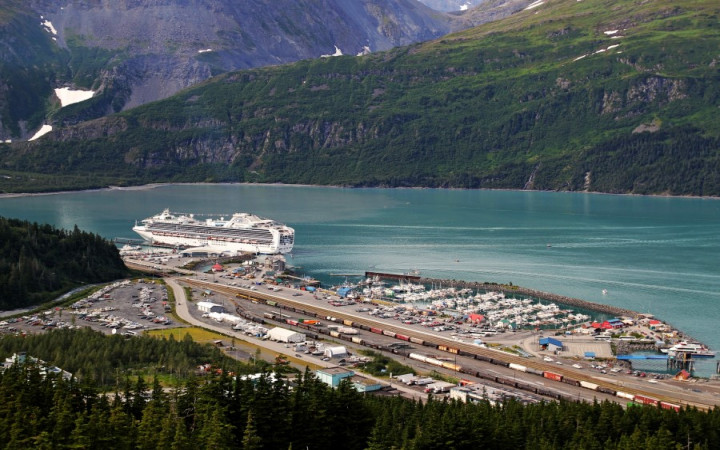How big is your hometown? Would you say you live in a city? Or is it just a town? Perhaps you live in a huge metropolis? We use lots of different words for what is essentially a group of people living in the same general area.
So how many people does it take to make a town? Do you have to have a certain number of homes? Or could everyone live under the same roof? Surely not, right? Before you claim that's impossible, though, there's a city you need to learn more about. Where are we talking about? Whittier, Alaska, Wonder Friends!
The gateway to Prince William Sound, Whittier sits on the northeast shore of the Kenai Peninsula, near the start of the Passage Canal. Approximately 75 miles southeast of Anchorage, Whittier is a remote outpost nestled amongst glaciers where it snows up to 22 feet every brutal winter.
Whittier was developed by the United States military in the wake of World War II and the start of the Cold War. An Alaskan outpost with a deep-water port seemed a necessity, given its proximity to Russia. In addition to blasting a railroad through a mountain to reach the town, the U.S. military built two large buildings, the Buckner Building and Begich Towers, to house its personnel.
Just seven years after completion, however, the military realized it didn't really need an outpost in Whittier. The Buckner Building was abandoned and remains a stark, hollow reminder of the town's military past. Begich Towers, though, was turned into condominium units when the city was turned over to civilians in the 1960s.
In fact, Begich Towers is what makes Whittier so unique today. Nearly the entire population of Whittier (roughly 200 people) lives in the 14-story Begich Towers building!
In Whittier's snowy, windy winters, residents rarely have to go outside the building if they don't want to. The town's offices, including the police department and post office, are inside the building. There's also a convenience store, laundromat, health clinic, school, and even a church in the basement.
The people who come to Whittier do so for many reasons. Many work in commercial fishing, tourism, or transportation (for the state ferry and railroad). Some simply like living in such a remote area.
Whittier remains fairly-inaccessible. In the past, the only way to reach Whittier was by sea or by railroad — and then only if weather conditions allowed. Today, you can also drive to Whittier, but it's not necessarily convenient.
Over 15 years ago, the State of Alaska upgraded the railroad tunnel into town, adding technology that would allow it to be used by both the railroad and automobiles. Officially called the Anton Anderson Memorial Tunnel, the Whittier Tunnel, as it's more commonly known, is now the longest highway tunnel in North America at approximately 2.5 miles long. Because automobile fumes in a tunnel that long could be hazardous to the health of drivers, jet engines were installed on each end to keep air flowing through the tunnel at all times.
Unfortunately, the tunnel is so narrow that traffic can only move in one direction. Vehicles exiting Whittier can leave on the hour, while vehicles heading into Whittier can enter on the half-hour. Of course, that easy-to-follow schedule gets complicated on a regular basis by trains that need to pass through. Add in the fact that the tunnel is closed at night, and you can understand how getting to and from Whittier can be difficult at times.





